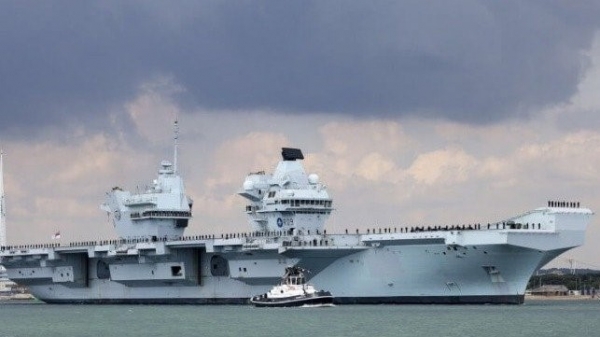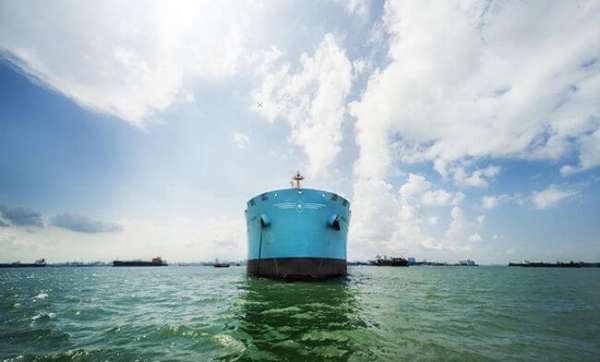Langh Ship Orders Feeder Ships that will Help Pioneer New Technologies
Langh Ship, based in Finland, ordered a new generation of highly efficient feeder containerships which will also be used to pioneer new technologies designed for the future challenges of the shipping industry. In addition to being specifically designed for the challenges of the Northern European market, including an ice-class hull, the vessels will incorporate advanced technologies from the shipping company’s sister organization Langh Tech. With orders such as this, European feeder ships are at the front of the industry’s efforts to reduce carbon emissions.
The three 1,200 TEU container vessels will be built at the Paxocean shipyard near Shanghai, China. Each of the vessels will be approximately 490 feet long with an 88-foot beam and nearly 29-foot draft. Designed by Langh Ship in collaboration with the Shanghai Merchant Ship Design & Research Institute (SDARI), the vessels are optimized for the European market. The design is for 45-foot containers both in the hold and on deck and the vessels will be built to Finnish/Swedish ice class 1A.
”In the European market we see a need for this type and size of container feeders,” says Laura Langh-Lagerlöf, Managing Director of Langh Ship. ”By optimizing the hull lines we managed to maximize the cargo capacity and at the same time minimize the energy consumption, still keeping a speed of 18 knots if needed.”
Langh Tech is also involved with the new ships reporting that they using the designs to pilot new concepts to improve the environmental performance of the ships. The new buildings will be equipped with a two-stroke, slow-speed main engine for the best fuel economy. The main engine as well as the three auxiliary engines will all meet the stringent IMO Tier III requirements for NOx-emissions. The main engine can also be operated on biofuel as soon as it will become available on a larger scale.
”It is exciting to get new vessels into our sister company’s fleet as on these vessels it is easy for us to do piloting of various new concepts,” Kim says. ”There will be at least the hybrid scrubber, carbon capture, and BWMS delivered by Langh Tech, let’s see what we will come up with in addition to that,” he added.
The hybrid scrubbers from Langh Tech feature a new design that may be operated continuously in closed loop mode without time restrictions. In addition, it will build on the company’s work incorporating carbon capture into the exhaust scrubber.
Other environmental considerations include preparing the vessels with a shore power connection and a hybrid solution including batteries. Langh Tech will also supply the ballast water management system, where the water needs to be treated only at intake. According to the company, with an innovative flow pattern in the UV reactor, the LanghBW units have received IMO approval with only one treatment cycle. This saves energy and doubles the lifetime of the UV lamps.
The new vessels will be the next step in the company’s effort both to expand its operations and prepare for net zero operations. Langh Ship also recently ordered three multipurpose newbuilds, which are under construction at the Wuhu shipyard. Langh Ship currently has a fleet of ten vessels.
HMS Prince of Wales has “Significant Damage” Likely Requiring Dry Dock
The Royal Navy has taken the unusual step of responding to media speculation by issuing a detailed statement on the damage to HMS Prince of Wales. One of the two largest ships of the fleet and only having recently been placed into service, the carrier suffered an embarrassing failure as she departed for what was being called a “landmark mission” in cooperation with the Americans.
Speaking in a videotaped statement, Rear Admiral Steve Moorhouse said, “Our focus has been on understanding the nature and extent of the damage and the safety of her crew. We will repair her and get her back on operations, protecting the nation and our allies, as soon as possible.”
HMS Prince of Wales departed Portsmouth on Saturday, August 27, for what was to be a nearly four-month program to sail to the United States for joint training exercises and a visit to the Caribbean. Observers noted as she departed that she seemed to only be showing a wake on the portside leading to rampant comments of a problem with possibly the starboard propeller.
Shortly after sailing, the carrier anchored with the Royal Navy admitting there had been an “issue” after her departure. She was later moved to a more sheltered position while a survey was ongoing.
“Royal Navy divers inspected the starboard shaft and adjacent areas,” says the Rear Admiral. “We can confirm there is significant damage to the shaft and the propeller and some superficial damage to the rudder. There is no damage to the rest of the ship.”
The initial assessment of the carrier also shows an “extremely unusual fault,” in the starboard shaft. The coupling that joins the final two sections of the shaft has failed.
According to the reports, the Royal Navy is currently trying to stabilize the situation before they can return the vessel to Portsmouth. They are also investigating repair alternatives, but are admitting that it is likely the Prince of Wales will need to dry dock to undertake repairs. No estimates were offered on how long it might take to complete the repairs.
In an effort to save the mission, the Royal Navy reports that they have reassigned HMS Queen Elizabeth to undertake a portion of the training exercise with the United States. The first carrier of the class is due to stand in for her younger sister ship departing this week for the United States. However, she will return to Europe earlier than planned to undertake her fall exercises which were scheduled for the Mediterranean.
So far, the Royal Navy has not offered any explanations as to how the damage occurred to the Prince of Wales. It is just the latest in a series of high-profile failures of the multi-billion-dollar carrier. Commissioned in December 2019, she spent most of 2020 and 2021 sidelined with a series of problems. Finally, in October 2021, the Royal Navy declared that she was fully operational and would be fully ready for frontline deployment by 2023.
Maersk Signs Newbuilding Order For Four LR2s
The order is part of an ongoing fleet renewal programme in the LR2 segment. “We are building the LR2s to ensure we have a portfolio of vessels that best fits our customers’ demands. The newbuildings will help us sustain a competitive fleet in a segment that is attractive to customers and owners alike, and to retain a strong market position,” says Søren C. Meyer, Chief Asset Officer at Maersk Tankers.
The contract for the newbuilding programme was signed in a market with competitive asset prices. In May 2018, the company confirmed the order of the first six vessels. The plan is to deliver the ten LR2s from 2020 – 2022. The vessels will come under Maersk Tankers’ commercial, technical and corporate management.
Reference: maersktankers.com
Will You Take the Pledge for Inclusion of Women in Shipping?
The Women's International Shipping & Trading Association (WISTA) has launched its inclusion pledge which addresses the under representation of women in the maritime industry.
The pledge is a series of statements aimed at embracing diversity through individual action and personal responsibility. Individuals are encouraged to sign the pledge in support of a diverse and inclusive maritime sector. The pledge can be found online on the WISTA International website or Change.org.
Signatories of the pledge commit to "Embrace diversity of thought (including gender, race, ethnicity, and age) and contribute to a merit-based business environment within my organisation. I will be a champion of equal opportunity and equal pay. My behavior will reflect how I wish our industry to behave in the future. I will work - and encourage others to work - toward a diverse and inclusive maritime sector."
WISTA International President Despina Panayiotou Theodosiou said: "We geared this pledge to individuals, for we feel strongly that individuals have the power to bring about change."
In 2018, WISTA International appointed a Diversity Committee to focus on practical solutions to increase opportunities for gender diversity in the maritime industry. Writing a pledge to challenge the community to advance diversity and inclusion was a mandate of the committee.
WISTA has produced a Gender Diversity Manual in conjunction with ISWAN and Anglo-Eastern.
Formed in 1974, WISTA International is a global networking organization for female managers in the shipping industry, with more than 3,000 members worldwide, and 45 national WISTA associations. The number of associations continues to grow, and earlier this month a national association was established in Chile.
WISTA was approved for consultative status with the IMO in July 2018, providing the organization with a formal voice for supporting IMO work in a variety of areas.
Last week IMO Secretary-General Kitack Lim gave an address on empowering women in the maritime community, the World Maritime Day theme for this year. The theme provides an opportunity to raise awareness of the importance of gender equality, in line with the United Nations' Sustainable Development Goals, particularly SDG5, and to highlight the important, yet under-utilized, contribution of women within the maritime sector.
Reference: maritime-executive.com






